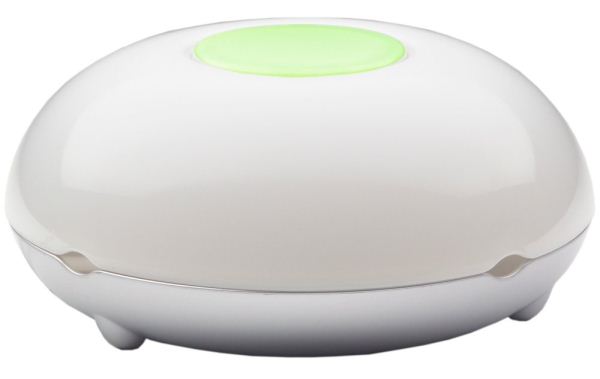Visible Energy UFO Power Center Smart Power Strip Review
by Ganesh T S on October 26, 2012 8:00 AM EST- Posted in
- Home Automation
- Wi-Fi
- Visible Energy
Introduction
Home automation technologies have become more accessible to consumers over the last couple of years. As computing moves from PCs to the cloud, tablets and smartphones and, then, onto wearable and distributed versions, we, at AnandTech, want to be in the forefront of covering it for our readers. Towards this, we started our home automation section earlier this month with an overview.
Some home automation technologies also tend to make consumers aware of the energy usage profiles of their electrical devices. In the overview, I had briefly touched upon Visible Energy’s UFO Power Center, which fulfills that criterion. We have been using the unit over the last few weeks, and we believe that this is a unique product which can serve multiple markets (some, better than others).
Visible Energy is a bootstrapped 4-person startup headquartered in Palo Alto. The company aims to help people conserve energy by creating, in their own words, energy-aware smart products with cloud-based interactive services. These services include energy management and home automation control.
Put simply, the UFO power center is a power strip with four electrical outlets. It connects to a Wi-Fi network and obtains an IP address through DHCP. Instead of a physical on/off switch, the outlets are controllable over Wi-Fi. Real-time power consumption monitoring as well as energy consumption history are available on a per-outlet basis. Wi-Fi control can be realized by any of the following three means:
- Using Visible Energy’s cloud portal after registering the device on their site
- Using an iOS app where the iOS device and the UFO power center are in the same Wi-Fi network
- Sending specific HTTP requests to access one of the open APIs provided (through a custom app / script / program)
The UFO Power Center can serve the following markets, though Visible Energy promotes the unit as being fit for the first one below:
- Home energy management / electricity consumption monitor accessible over the network
- Networked power controller / power distribution unit (PDU)
- Advanced electrical parameter measurement tool
Visible Energy’s targeted marketing makes sense, as we will see further down in the review. Even though the latter two markets can be served easily, the unit requires some tweaks (mainly in firmware) before it can appeal to those consumers.
We will first start off the review with an overview of the internal hardware and the some comments on the industrial design. Following that, we will have a detailed discussion of the available functions and a description of the cloud back-end. Before providing the concluding remarks, we will devote a section to the open APIs provided by the platform and how we are actually using it at AnandTech.











35 Comments
View All Comments
Tros - Friday, October 26, 2012 - link
I don't see how choosing a 16A relay for each socket is "playing it safe". Maybe a >21A relay would be considered "playing it safe" (for the small-uninformed-population running a MIG-welder from a wall-socket).A 15A relay would mean that the manufacturer has to do some additional QA to handle the statistics in which relays actually fall short of that rating (and consequently, that 15A rating which is the basic standard for wall outlets here in the U.S.).
This is playing it according to specification.
jb510 - Sunday, October 28, 2012 - link
Is it possible to remotely tell it to power cycle a device? ...and specifically the wifi router it's relying on for control? Just to be painfully clear manually turning that plug back on after turning it off would be impossible since there'd be no wifi at that moment, so im wondering if you can just send a single command to power cycle a outlet off and back on?ganeshts - Monday, October 29, 2012 - link
Power cycle is not possible with the current firmware, and I would also advise against using one of the outlets for the Wi-Fi router itself. For such purposes, PDUs from Digital Loggers can be used because some of the outlets in their devices are left unswitched (i.e, they are on all the time as long as the PDU gets power) / they offer power cycle functionality.rangerdavid - Sunday, October 28, 2012 - link
"I am actually doing a bit of disservice to the unit by not reviewing the iOS app, as I have never been a fan of (nor do I ever plan on being one) Apple’s restrictive ecosystem."Who gives a ---- about this - review the app, or don't. The app is the app. Don't penalize it for being available on an iOS device just because you don't like Apple's "restrictive ecosystem." So restrictive that 200,000+ apps just appeared out of thin air?
I'd say this is a cheap shot and lame excuse not to post a page about the app.
Otherwise, this is a great article. I'm just calling you on this one issue. So there.
valkator - Thursday, November 1, 2012 - link
Sweet, I can hook up all my devices to this unit and it can be my dogs water bowl. :)^ Joke